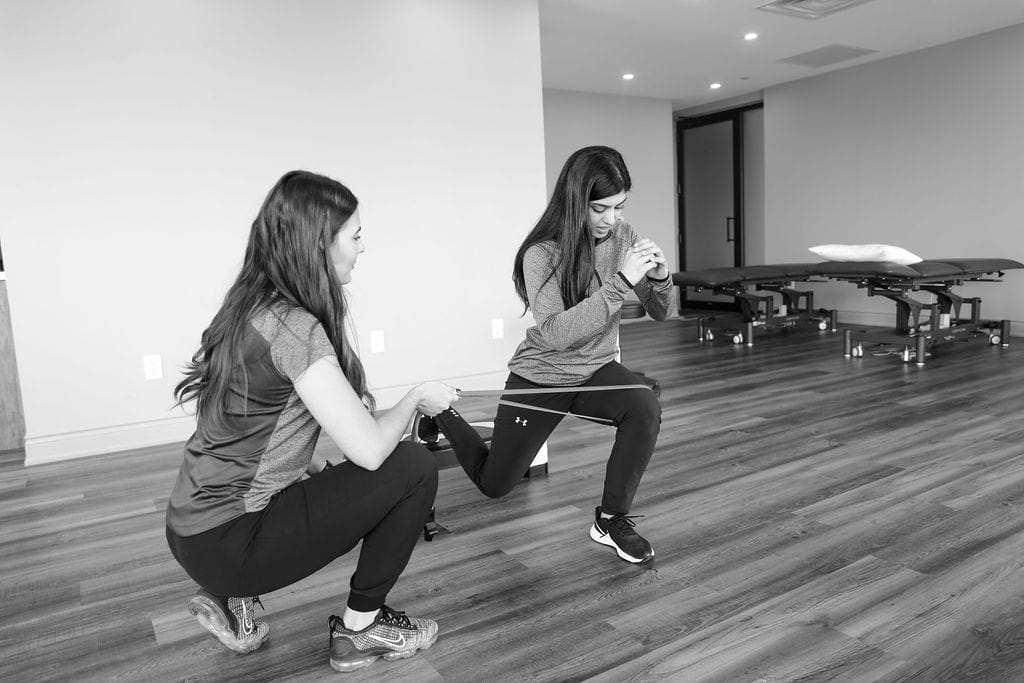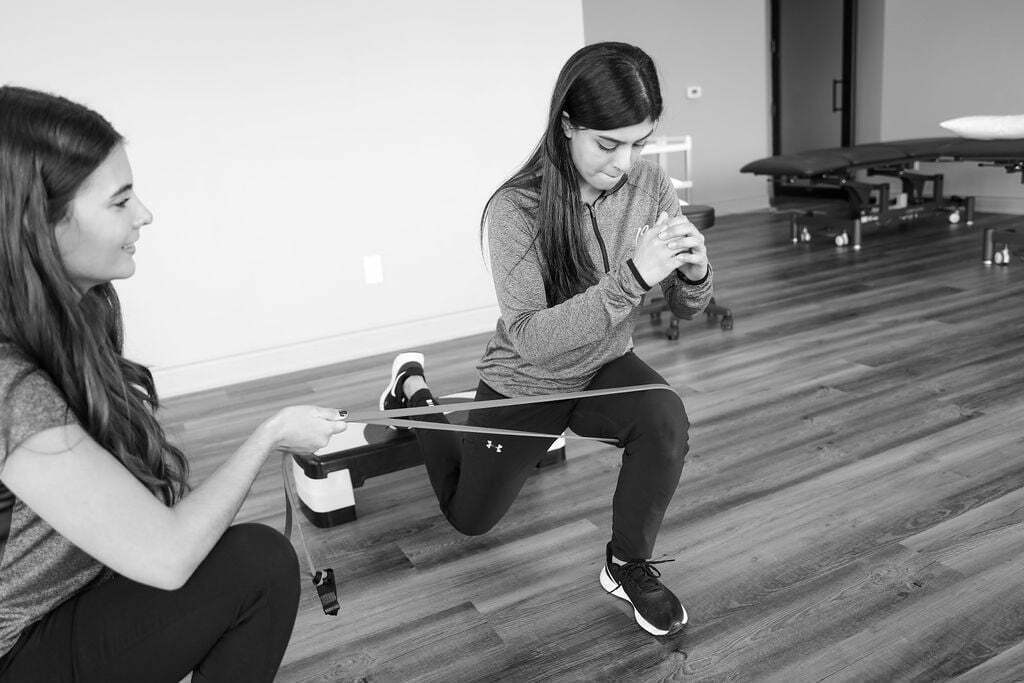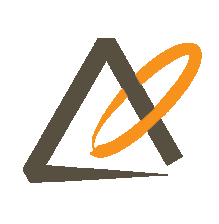Yes, physiotherapy can help with knee pain.
Knee pain is a very common complaint, and is something that can originate from many different structures in and around the knee. The knee joint is made up of the interaction between the femur (thigh), the tibia (shin), and the patella (kneecap). All the tissues around these areas can be contributing to your knee pain.

How does physiotherapy help with knee pain?
Here are some ways in which physiotherapy can help with knee pain:
- Pain management: Physiotherapists can utilize various modalities such as manual therapy, heat or cold therapy, and electrical stimulation to help alleviate pain and reduce inflammation in the knee joint.
- Exercise prescription: Specific exercises can be prescribed to strengthen the muscles around the knee joint, improve flexibility, and enhance joint stability. These exercises help restore normal movement patterns, reduce stress on the knee joint, and promote healing.
- Manual therapy: Physiotherapists may use hands-on techniques like joint mobilization or soft tissue massage to improve joint mobility, reduce muscle tension, and enhance circulation in the knee area.
- Education and self-management: Physiotherapists provide education about proper body mechanics, posture, and ergonomics to prevent further knee pain or injury. They may also offer guidance on activity modification and self-management strategies to promote long-term knee health.
- Assistive devices and bracing: If necessary, physiotherapists can recommend and provide appropriate assistive devices such as knee braces or orthotics to support the knee joint and reduce pain during movement.
What are the causes of knee pain?
Knee pain can have various causes, ranging from acute injuries to chronic conditions. Here are some common causes of knee pain:
- Acute injuries: Knee pain can result from sudden injuries, such as sprains, strains, ligament tears (such as anterior cruciate ligament or ACL tears), meniscus tears, or fractures. These injuries often occur during sports activities, accidents, or falls.
- Overuse or repetitive strain: Repetitive activities or excessive stress on the knee joint can lead to overuse injuries. Examples include patellofemoral pain syndrome (pain around the front of the knee), iliotibial band syndrome (inflammation of the band of tissue on the outside of the knee), or tendinitis (inflammation of a tendon, such as patellar tendinitis or jumper’s knee).
- Osteoarthritis: This is a degenerative joint disease characterized by the breakdown of cartilage in the knee joint. It is more common in older individuals and can cause knee pain, stiffness, and swelling.
- Rheumatoid arthritis: Unlike osteoarthritis, rheumatoid arthritis is an autoimmune condition that causes inflammation and damage to the joints, including the knee. It can lead to chronic pain, joint deformity, and functional limitations.
- Bursitis: Bursae are small fluid-filled sacs that cushion and reduce friction between tendons, ligaments, and bones. When the bursae become inflamed (bursitis), it can cause knee pain, swelling, and limited mobility.
- Patellar dislocation or instability: This occurs when the kneecap (patella) slips out of its normal position, often due to a sudden change in direction or a direct blow to the knee. It can cause severe pain, swelling, and instability.
- Gout: Gout is a type of arthritis caused by the buildup of uric acid crystals in the joints. It can affect the knee joint, leading to sudden and intense pain, redness, and swelling.
- Tumors: Although rare, tumors can develop in the bones or soft tissues around the knee joint, leading to knee pain and swelling.
What are some of the conditions associated with knee pain?
Some of the conditions associated with knee pain are:
- Patellar Tendonitis
- Patellofemoral Syndrome
- Osgood Schlatter Syndrome
- Knee Bursitis
- Knee osteoarthritis
- Baker’s Cyst
- Knee Ligament Injuries
How to treat knee pain at home
You can treat knee pain at home by doing some of the following:
- Rest: Avoid activities that aggravate the pain and give your knee sufficient rest. This can help reduce inflammation and promote healing.
- Ice therapy: Apply ice packs wrapped in a thin cloth to the affected knee for about 15-20 minutes at a time, several times a day. This can help reduce pain and swelling. Be sure to allow your knee to warm up between icing sessions.
- Compression: Use a compression bandage or knee brace to provide support and reduce swelling. However, make sure it’s not too tight to restrict circulation.
- Elevation: Elevate your leg and place a pillow under your knee to help reduce swelling.
- Over-the-counter pain relievers: Nonsteroidal anti-inflammatory drugs (NSAIDs), such as ibuprofen or naproxen, can help relieve pain and reduce inflammation. Follow the instructions on the package and consult with a pharmacist if you have any concerns.
- Gentle exercises: Once the acute pain and swelling have subsided, gentle range-of-motion exercises and stretching can help improve mobility and reduce stiffness. However, avoid any exercises that cause pain or discomfort. Consult with a physiotherapist for appropriate exercises.
If you’re experiencing knee pain, it’s recommended to consult with a healthcare professional, such as a physician or physiotherapist, for an accurate diagnosis and appropriate treatment.
Click HERE to book an appointment with a physiotherapist at one of our eight locations.
- Physiotherapy Etobicoke – Triangle Physiotherapy Etobicoke
- Oakville Physiotherapy Clinic – Triangle Physiotherapy Oakville
- Physiotherapy North York – Triangle Physiotherapy North York
- Mississauga Physiotherapy Clinics – Triangle Physiotherapy Mississauga
- Downtown Physiotherapy Clinics – Triangle Physiotherapy King West
- Uptown Physiotherapy Clinics – Triangle Physiotherapy Lawrence Park
- Physiotherapy Clinic Downtown Toronto – Triangle Physiotherapy Queens Quay
- Physiotherapy Clinics Mississauga – Triangle Physiotherapy Erin Mills
“Physiotherapy is a highly effective approach for managing and alleviating knee pain, whether due to injury or chronic conditions. Triangle Physiotherapy provides expert care across the GTA, including Physiotherapy in Etobicoke, Oakville, North York, Toronto, Lawrence Park, Queens Quay, Erin Mills, Mississauga, and Liberty Village. Our experienced physiotherapists can develop a personalized treatment plan to help you reduce pain, improve mobility, and enhance your quality of life.”
Knee ligament injuries are quite common, and they can occur at any age. These injuries can be caused by a variety of factors, such as sports injuries, accidents, or falls. Knee ligaments connect the bones in the knee, and when they are injured, they can cause severe pain, swelling, and instability in the joint.
Anatomy of the Knee
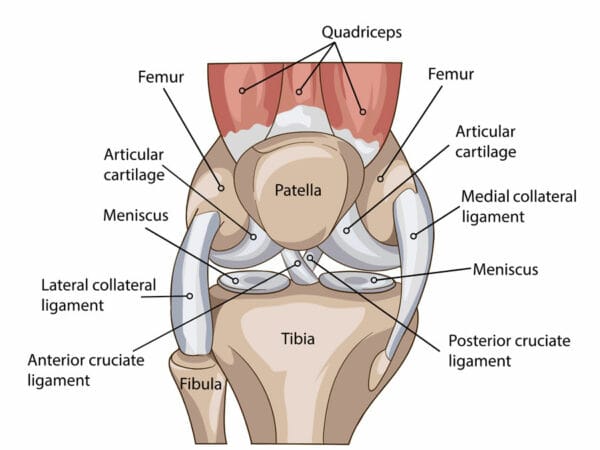
There are four primary ligaments in the knee, and they are the anterior cruciate ligament (ACL), the posterior cruciate ligament (PCL), the medial collateral ligament (MCL), and the lateral collateral ligament (LCL). Each of these ligaments serves a vital function in the knee joint, and an injury to any one of them can cause significant problems.ACL injuries are common in sports that require sudden stops and starts, such as football, basketball, and soccer. A sudden change in direction or a twisting motion can cause the ACL to tear or sprain. Symptoms of an ACL injury include a popping sound in the knee, severe pain, swelling, and difficulty walking or standing.
PCL injuries are less common than ACL injuries but can occur in the same types of sports. The PCL is located at the back of the knee and is responsible for stabilizing the knee joint. Symptoms of a PCL injury include pain, swelling, and instability in the knee joint.
MCL injuries are often caused by a direct impact to the outer side of the knee, such as during a tackle in football. Symptoms of an MCL injury include pain, swelling, and difficulty straightening the knee.LCL injuries are less common than MCL injuries but can occur in the same types of sports. The LCL is located on the outer side of the knee and is responsible for stabilizing the joint. Symptoms of an LCL injury include pain, swelling, and instability in the knee.
What is the best treatment for Knee ligament injuries?
Treatment for knee ligament injuries varies depending on the severity of the injury. In mild cases, rest, ice, compression, and elevation (RICE) may be all that is necessary to relieve pain and swelling. In more severe cases, surgery may be required to repair the damaged ligament.
Physical therapy is an essential component of treatment for knee ligament injuries. A physical therapist can help the patient regain strength, mobility, and flexibility in the knee joint. Exercises that focus on strengthening the muscles around the knee can help reduce the risk of future injuries.
How do I prevent knee injuries from recurring?
Preventing knee ligament injuries is also essential, especially for athletes who participate in high-impact sports. Wearing appropriate protective gear, such as knee pads, can help reduce the risk of injury. Stretching before and after exercise can also help prevent injuries.
In conclusion, knee ligament injuries can be a significant source of pain and disability. It is essential to seek prompt medical attention if you suspect you have a knee ligament injury. With the right treatment and rehabilitation, most people can recover from these injuries and return to their normal activities. Preventing knee ligament injuries is also crucial, and taking appropriate precautions can help reduce the risk of injury.
Book an appointment to see one of our physiotherapists to get that knee injury treated.
Recovering from knee ligament injuries requires proper physiotherapy to restore strength, stability, and function. For those seeking professional care, there are numerous physiotherapy clinics in physiotherapy Etobicoke, Oakville, North York, Toronto, Lawrence Park, Queens Quay, Erin Mills, Mississauga, and Liberty Village. These clinics provide expert physiotherapy services and personalized rehabilitation programs to help you recover effectively and return to your active lifestyle.
What is Osteoarthritis?
Osteoarthritis (OA) is the most common form of arthritis. It is a degenerative joint disease which occurs most frequently in the hands, hips, and knees. It results from the breakdown of cartilage which could cause the ends of bones to rub together, causing pain, stiffness and decreased mobility. In some cases it also causes disability and reduced function.There is no known cure for osteoarthritis but much can be done to reduce its impacts. The cornerstones of treatment for Osteoarthritis are physiotherapy and exercise but knee braces for osteoarthritis and inserts could also help.

What are the different types of knee braces for osteoarthritis?
- Prophylactic knee brace for osteoarthritis helps in prevention of injury especially during sports.
- Offloader or Unloader knee brace for osteoarthritis provide stability, pain relief, and support relief by reducing pressure on key areas.
- Rehabilitative knee brace for osteoarthritis limit movement of a joint to allow time for healing.
- Functional or supportive knee brace for osteoarthritis offers support to the knee joint to help reduce pain and discomfort.
What are the benefits of knee braces for osteoarthritis?
- A knee brace for osteoarthritis aides in the reduction of pressure and relief of discomfort by providing support on the surrounding areas on the knee cap.
- A knee brace for osteoarthritis provides compression which is very beneficial in the reduction of swelling which occurs with arthritis.
- A knee brace for osteoarthritis helps increase joint space in knee joints.
- A knee brace for osteoarthritis provides compression to reduce swelling which is one of the common symptoms in Osteoarthritis.
- A knee brace for osteoarthritis helps by shifting your weight off the most affected portion of the knee joint thus providing reduction of pain and discomfort.
- A knee brace for osteoarthritis allows more mobility while providing comfort and support.
When should I start wearing a knee brace for osteoarthritis?
Once you get diagnosed with knee osteoarthritis, book an appointment with one of our health practitioners who can assess you and recommend the best knee brace for osteoarthritis.
Knee pain is a very common complaint. It is something that can originate from many different structures in and around the knee. The knee joint is made up of the interaction between the femur (thigh), the tibia (shin), and the patella (kneecap). All the tissues around these areas can be contributing to your knee pain.
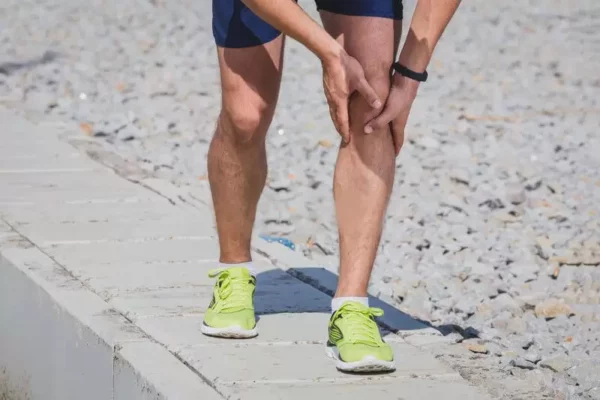
Common structures that can be contributing to your knee pain include but are not limited to: Ligamentous support around the knee (ACL, PCL, MCL, LCL), Meniscus Patellar Surfaces, Bursa Patellar or Quadriceps tendon. Pain in the knee could also be referral from other structures in the body such as the low back, or soft tissues further up or down the kinetic chain. Because of this, it is important to speak to a knowledgeable physiotherapist or chiropractor who can provide a detailed assessment.

People with knee pain commonly complain of inability to perform physical activity, pain when walking, standing, going up or down stairs, along with stiffness and lack of range of motion. A lot of these people are able to return to previous levels of physical function with a graded rehab program provided by a skilled practitioner. With a proper program, they are able to exceed their prior levels of function.
Physiotherapists are trained to assess, diagnose and treat musculoskeletal conditions, including knee pain. They use a variety of techniques and exercises to help alleviate pain, improve function, and prevent further injury. Some common techniques used by physiotherapists for knee pain include manual therapy, stretching and strengthening exercises, taping, and the use of modalities such as heat, cold, and electrical stimulation. Additionally, physiotherapists may provide education on proper body mechanics, ergonomics, and lifestyle modifications to help prevent future injury.
If you are struggling with knee pain, be sure to seek out a physiotherapist or certified FRC practitioner who can help you reach your physical activity goals.
